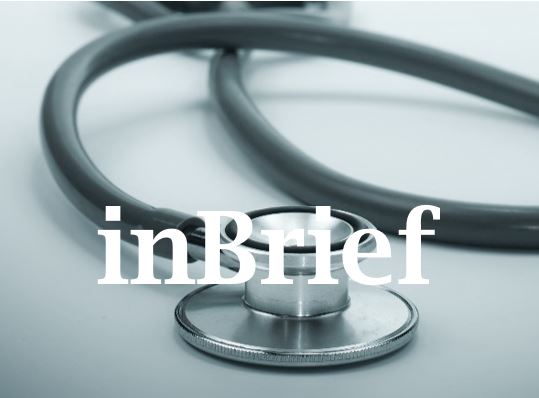UAE Federal Decree-Law 20 of 2018 on Anti-Money Laundering and Combating the Financing of Terrorism and Illegal Organizations (AML Law) came into force at the end of October 2018. Containing features recommended by the Financial Action Task Force (FATF), the new AML Law has been shaped by international AML standards and provides several mechanisms to combat money-laundering and to ensure that businesses in the UAE are actively involved in managing compliance risks associated with money laundering activities.
While the new AML Law has introduced subtle but important changes, it is the implementing regulations to the new AML Law which have helped bring further clarity to the anticipated operation of the AML Law. The Implementing Regulations were issued on 28 January 2019 pursuant to Cabinet Resolution 10 of 2019 (AML Regulations).
The AML Regulations provide welcome guidance on the implementation of the AML Law and clarify the intended impact in certain key areas. In particular, guidance has been provided on the following matters:
• types of businesses subject to the AML Law;
• the scope of the exemption, accorded to lawyers and auditors, from the obligation to report suspicious transactions; and
• the functions and role of the Financial Intelligence Unit (FIU).
What businesses are subject to the AML Law?
Prior to the release of the AML Regulations, it was thought to be the case that all businesses engaged in economic, commercial or professional activities in the UAE were subject to the full set of AML obligations imposed by the AML Law. The AML Regulations make it clear, however, that only those entities which qualify as Financial Institutions or as Designated Non-Financial Businesses and Professions (DNFBPs) will be subject to the obligations of the AML Law.
A Financial Institution is a person or entity that conducts one or more financial activities or transactions for or on behalf of a Customer. Pursuant to the AML Regulations, the following are considered financial activities and transactions:
1. receiving deposits and other funds from the public, including deposits in accordance with Islamic Sharia;
2. providing private banking services;
3. providing credit facilities of all types;
4. providing credit facilities in accordance with Islamic Sharia;
5. providing cash brokerage services;
6. financial transactions in securities, finance and financial leasing;
7. providing currency exchange and money transfer services;
8. issuing and managing means of payment, guarantees or obligations;
9. providing stored value services, electronic payments for retail and digital cash;
10. providing virtual banking services;
11. trading, investing, operating or managing funds, option contracts, future contracts, exchange rate and interest rate transactions, other derivatives or negotiable financial instruments;
12. participating in issuing securities and providing financial services related to these issues;
13. managing funds and portfolios of all kinds;
14. saving funds;
15. preparing or marketing financial activities;
16. insurance transactions, in accordance with Federal Law 6 of 2007 Concerning the Establishment of the Insurance Authority and the Organisation of its Operations; and
17. any other activity or financial transaction determined by the Supervisory Authority.
A DNFBP is a person or entity engaged in the following trade or business activities:
1. brokers and real estate agents when they conclude operations for the benefit of their Customers with respect to the purchase and sale of real estate;
2. dealers in precious metals and precious stones when they carry out any single monetary transaction or several apparently related transactions with a value equal or exceeding AED 55,000;
3. lawyers, notaries, and other independent legal professionals and independent accountants, when preparing, conducting or executing financial transactions for their Customers in respect of the following activities:
a) purchase and sale of real estate;
b) management of funds owned by the Customer;
c) management of bank accounts, saving accounts or securities accounts;
d) organising contributions for the establishment, operation or management of companies;
e) creating, operating or managing legal persons or Legal Arrangements; and
f) selling and buying commercial entities.
4. providers of corporate services and trusts upon performing or executing a transaction on behalf of their Customers in respect of the following activities:
a) acting as an agent in the creation or establishment of legal persons;
b) working as or equipping another person to serve as director or secretary of a company, as a partner or in a similar position in a legal person;
c) providing a registered office, work address, residence, correspondence address or administrative address of a legal person or Legal Arrangement;
d) performing work or equipping another person to act as a trustee for a direct Trust or to perform a similar function in favor of another form of Legal Arrangement; and
e) working or equipping another person to act as a nominal shareholder in favor of another person.
The AML Law also specifies that other professions and activities may be added to this list over time as determined by a resolution of the Minister.
Once an entity qualifies as either a Financial Institution or as a DNFBP, it will be required to undertake customer due diligence; identify, assess and understand AML risks that may arise for its business; mitigate such risks; and take measures for the enhanced management of any high risks that it identifies.
Exemption for lawyers and auditors from reporting suspicious transactions
As noted above, lawyers, notaries, and other independent legal professionals and independent accountants may qualify as DNFBP’s depending on the activities they are undertaking for their clients.
This has caused issues for such professionals who may be bound by client confidentiality requirements as well as non-disclosure agreements.
The AML Law introduced the concept of an exemption for lawyers, notaries, other legal professionals and independent legal auditors with regard to information that they receive subject to professional confidentiality. However, little detail regarding this exemption was provided in the AML law. As a result, professionals were left wondering as to the scope of the exemption and their ability to rely on it.
The AML Regulations have provided further clarity on the operation of this exemption.
As a general rule, the AML Regulations require that any Financial Institution or DNFBP who has reasonable grounds to suspect that a transaction, attempted transaction, or funds in whole or in part constitute the proceeds of a crime, are related to a crime, or are intended to be used in criminal activity, must provide a suspicious transaction report to the FIU and thereafter provide all additional information requested by the FIU.
The AML Regulations exempt lawyers, notaries public, other legal professionals and independent legal auditors from this requirement if the information regarding such transactions was obtained in the course of their assessment of their clients’ legal position, defending or representing the clients before judicial authorities or in arbitration or mediation proceedings, providing a legal opinion with regard to legal proceedings, or other circumstances where such clients benefit from professional privilege.
Furthermore, while a Financial Institution or a DNFBP is normally prohibited from disclosing to its client the fact that it has made a suspicious transaction report, the AML Regulations clarify that in cases where a lawyer, notary, other independent legal professional, or independent legal auditor attempts to discourage their client from committing a violation, this shall not be considered as such disclosure.
While lawyers, notary publics, other legal professionals and independent legal auditors are exempted from reporting suspicious transactions as aforesaid, they are still required to abide by all other obligations in the AML Regulations imposed on them as DNFBPs, including conducting customer due diligence and enhanced management of high risks.
The role of the FIU
The AML Law and AML Regulations have maintained the role of the FIU to receive and process information related to crime. They accord the FIU powers to investigate and to process suspicious transaction reports and to seek further information from Financial Institutions and DNFBPs. The AML Regulations grant the FIU the international role of exchanging information with and reporting to its counterparts in other countries.
Conclusion
The AML Regulations provide welcome clarity on the operation of the AML Law and in particular the changes introduced in the AML Law.
Such changes complement a series of other measures aimed at strengthening the integrity of the UAE’s financial system and bringing it into consistency with global standards.
The AML Law and AML Regulations should further be viewed as a sign that there is no tolerance for financial crime in the UAE. Businesses operating in the UAE who fall within the definition of a Financial Institution or DFNBP need to consider the application of the AML Law and AML Regulations to their business and ensure that they have internal processes in place to identify, manage and mitigate high risk customers and activities.■





